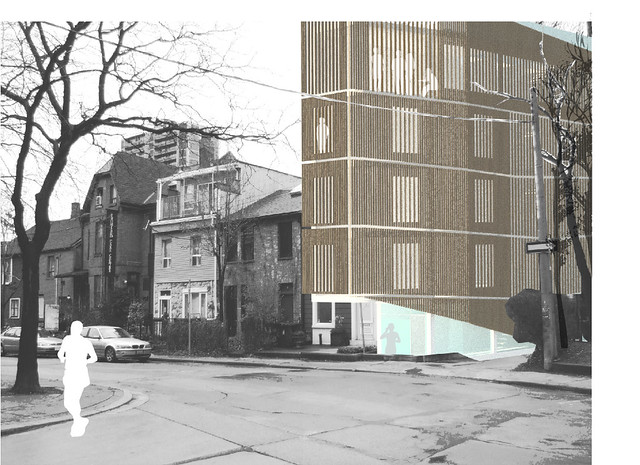
EDITOR: This is the first post in our series looking at the laneway housing projects created in a University of Toronto Architecture Faculty’s Laneway Housing studio led by Brigitte Shim & Don Chong. This work and text is by Utako Tanebe, whose bio you can find below.
This Super Narrow Student Housing scheme was instigated by a Toronto Star article I came across while researching for a narrow space site. The article, dated September 24th 2011, features a Toronto police housing bust that took place at “Marina Centre” at Yonge and Wellesley on the count of illegal rooming house. At the scene, police uncovered 90 tenants, all of whom were all living in tiny cell-like bedrooms. Most of the rooms were barely big enough to fit a twin-size bed and had access to shared bathrooms and common rooms for eating and lounging. The city quickly acted on eviction of the Marina Centre, based on the account of 25 violations on rooming sizes and without a legitimate rooming house license. All the tenants were ESL students who had come to Canada from all around the world to learn English.
The article, however, reveals an interesting side to this whole story; that the students were actually quite happy with the tiny space set up and did not want to move out. For the international students, particularly those coming from Asia, Eastern Europe and other parts of the world, living in a small bedroom space with shared accommodation was normal and practical. The reasonable rent of $400 a month was important for these students, and the chance to meet and interact with other students during their short-term stay in Canada was actually quite popular.
As the premise of our Laneway Studio project was to uncover a new typology of narrow space housing for the City of Toronto, an idea formed in my head. What about designing a purpose-built narrow space rooming house for international students? Could this instigate a new typology for Toronto and promote further popularity of the city to the wider audience of ESL students from around the world?
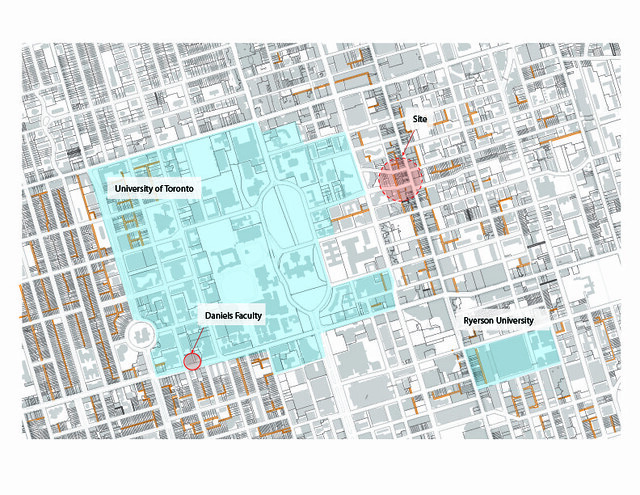
There is a need for more student housing in Toronto looking at the boundaries of university campuses and student residences around Yonge and College area.
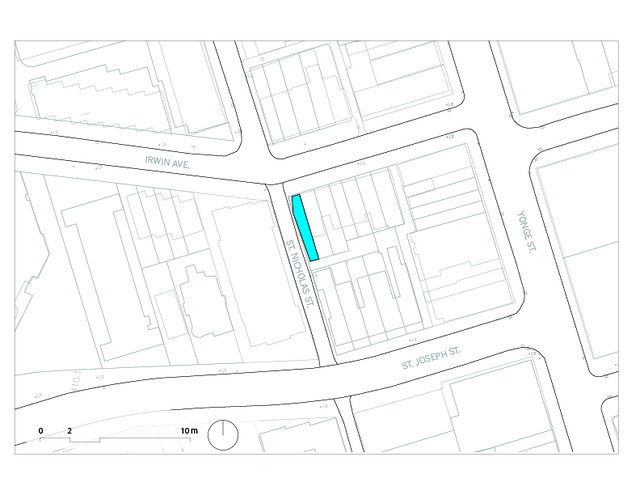
The chosen site is located at the SE corner of St. Joseph Street and St. Nicholas Street. It is in close proximity to the original Marina House, and is accessible to both University of Toronto and Ryerson University campuses. The site is adjacent to St. Nicholas Street (primary laneway) and also backs onto a communal open space used for parking (secondary laneway). The land lot is 3.5 m wide and 22 m long, or 77 square meters altogether.
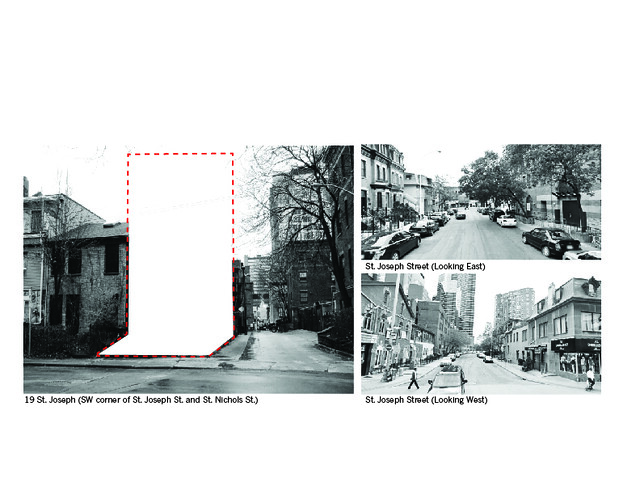
South-East corner of St. Joseph Street and St. Nichol Street.
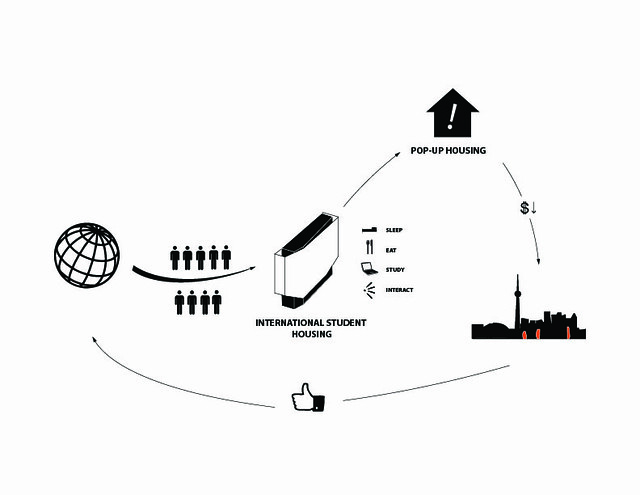
A new building typology for narrow spaces in the City of Toronto; an international student housing unit for up to nine people that helps them flow into and out of the city with ease.

The new design for this narrow-space international house can host up to nine tenants. The house consists of five storey’s: ground floor lobby entrance, three floors of 3 bedrooms + bathroom, top floor kitchen and study, as well as a roof top patio for the summer BBQ season. The main mode of circulation in the house is the central scissor-staircase that connects each floor in a zig-zag motion all the way up to the top floor. There is also an elevator that services the entire building and to the rooftop patio.

There are some features that make this narrow space housing unique to the niche market of international students. First is the central staircase. The staircase is meant to provide a staggered link between each floor to promote interaction between the students during their stay. The pocket spaces between staircases can be used for reading, lounging, or gallery space (to show case artworks by the students past and present). This is essentially a communal space that extends and connects all of the small bedroom units. The staircase is also encased in fireproof glass to provide two means of exit from each floor and to provide a stack effect for passive heating/cooling within the building.
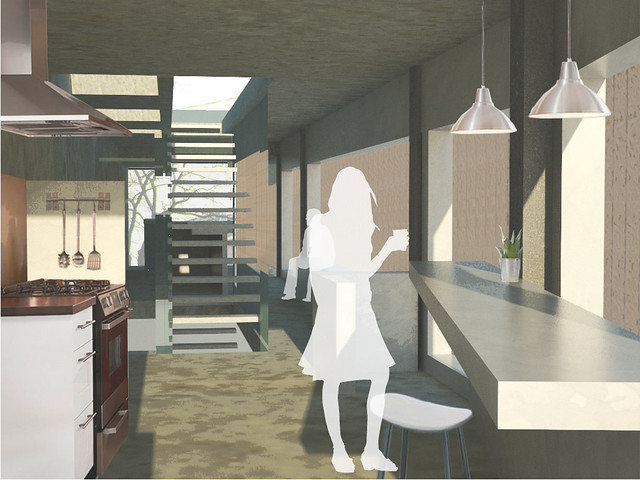
The second feature is the communal space at the top of the building. The open concept room consists of kitchen, mini bar, “big table” for both eating and studying, lounge and/or reading space and laundry. In other words, this is the space where everything happens when the students are not sleeping or showering. The communal space promotes interaction through the act of dining and studying, and is intended to be used like an extension of their bedrooms. Overall, the building provides an appropriate choice of living for international students in Toronto during their short 4~8 months stay.
Utako is a graduate of the University of Toronto (B.Eng Civil Engineering 2006, B.A.Hon Architecture Theory 2009). She has work experience in numerous countries in Asia and North America with her prior expertise in the field of transportation engineering and urban design. She is bilingual in English and Japanese.
Utako’s academic research focuses on the integration of architecture with its urban surrounding. She is particularly interested in the cultural, social, environmental and spatial exchange that takes place at the intersection of the built form and the surrounding environment. Her research also focuses on the bridging between architecture and engineering, and the relation between Japanese and North American contemporary architecture.
Utako is currently pursuing her Master of Architecture at the John H. Daniels Faculty of Architecture, Landscape, and Design. She is also a Resident Junior Fellow of Massey College at the University of Toronto. Outside of school, Utako is an avid equestrian and rides and competes in Dressage.




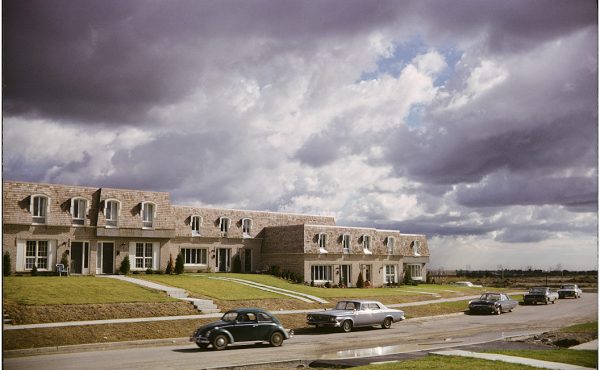
2 comments
Very interesting project. Where can I find a larger version of the plan?
Very narrow building are not at all uncommon in Asia. It is refreshing to see it in the context of Toronto. The design looks very nice, however, with only 9 units, I wonder if it is financially viable. And an elevator! I know it is probably required by code for accessibility and so on, but really, it is probably too much a burden for such a small building.
Interesting thing about Marina House is that its signage looked like Rob/Doug Ford election signage. (Just saying.)